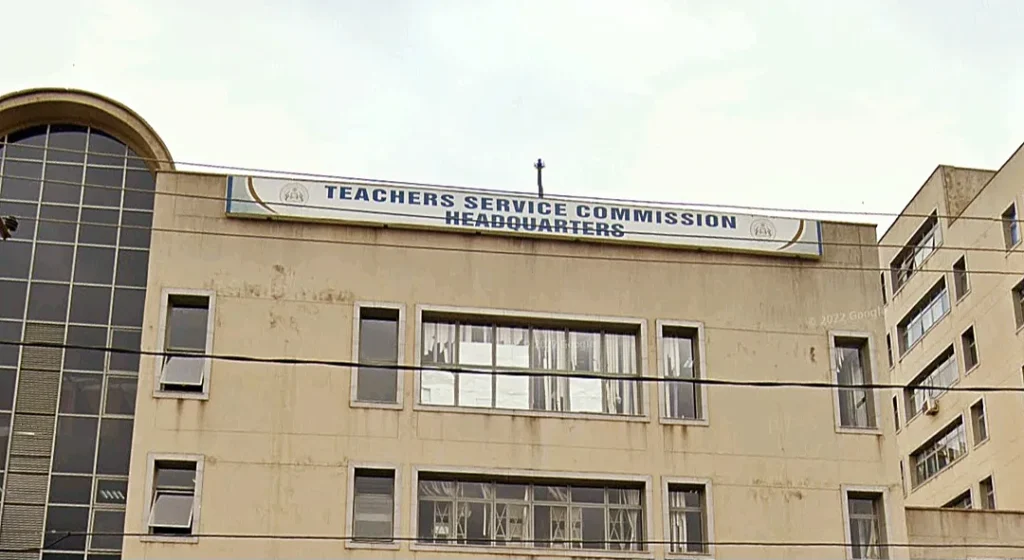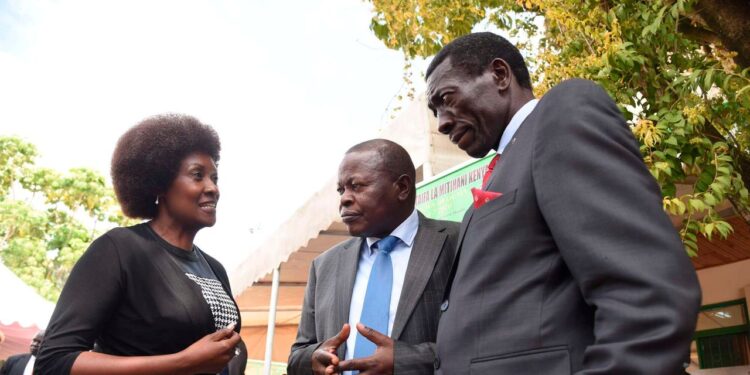Teachers to Lose Allowances as Government Reclassifies Hardship Area.
Thousands of teachers currently benefiting from hardship allowances are expected to face significant financial setbacks as the government moves to reclassify regions considered hardship zones. Prime Cabinet Secretary Musalia Mudavadi informed the National Assembly that the new approach is expected to save the government approximately Ksh6 billion annually.
He explained that the review stems from recommendations made in a 2019 Inter-Agency Technical Committee report, which proposed the harmonisation of hardship areas across government institutions to ensure consistency and fairness.
The directive follows complaints by lawmakers who argued that the existing classification system was both biased and discriminatory. Legislators raised concerns that some regions were unfairly labelled as hardship zones while others, facing similar conditions, were excluded.
According to a document reviewed by Teachers Updates, the revised system will categorise hardship regions into two tiers: extreme and moderate. Counties now classified under extreme hardship include Mandera, Garissa, Turkana, Wajir, Tana River, Isiolo, and West Pokot.
Moderate hardship areas will now cover regions such as Suba North, Suba South, Narok West, Narok South, and selected parts of Kitui, Makueni, Kajiado, Kilifi, Nyando, Nyakach, and Laikipia. Notably, many zones that previously qualified for hardship status are excluded under the new framework.
The report argues that significant development brought about by devolution under the 2010 Constitution has improved infrastructure and services in many of these regions, making them ineligible for hardship designation.
Educators from regions omitted in the updated list have reached out to Teachers Updates to voice their frustrations. Many say they had budgeted their lives around the hardship stipend and now face financial uncertainty.
One teacher expressed, “We accepted deployment in tough environments because the hardship allowance made it manageable. Without it, we’re left exposed.” Another lamented that the change could not have come at a worse time, adding, “This isn’t just a pay cut. It’s a betrayal.”
Several educators are now urging their unions to step in and intervene before the classification is officially adopted.
The Prime Cabinet Secretary clarified that part of the review was in response to growing demands by legislators to explain why the Teachers Service Commission (TSC) recognises 44 hardship zones, the Civil Service and State Corporations only 16, and the Judiciary 21. The inconsistency, he noted, stems from each institution using a different basis—TSC relies on educational zones, while the civil service follows former district boundaries.
As of publication, the final status of teachers in areas such as Tinderet, Soin Sigowet, Bunyala, Elgeyo Marakwet, and Tharaka Nithi remains unclear, but these regions are expected to be addressed in the forthcoming report.
KNUT Criticises SRC’s Hardship Reclassification
The Kenya National Union of Teachers (KNUT) has criticised the Salaries and Remuneration Commission (SRC) over its reclassification of hardship areas, cautioning that this move could significantly undermine the morale and welfare of teachers working in difficult environments.

During the Kilindini Branch AGM in Kilifi, KNUT National Vice-Chairman Malel Lang’at, alongside other union officials, opposed the recent categorisation of hardship regions into “extreme” and “moderate” zones.
KNUT stated that this revision, effective from July, might unjustly remove longstanding hardship allowances from teachers in some of Kenya’s most challenging locations.
Lang’at remarked that teachers posted in these zones endure daily risks and discomforts, and stripping them of adequate benefits would be unjust. He explained that the decision appeared ill-intentioned and skewed, possibly violating the constitutional rights of educators. “We want to tell the government that such a move is not only biased but also discriminatory and unfair,” he stated.
Rising insecurity in parts of the Coast, Rift Valley, and North Eastern regions was highlighted as another urgent issue. KNUT pointed to increased bandit attacks, which have disrupted school activities and led to the deaths of teachers, students, and parents. The union demanded decisive government intervention to restore order and ensure safe learning environments.
While acknowledging the government’s recruitment of 76,000 teachers over two years, KNUT stressed that the efforts fall short. The union cited the Teachers Service Commission (TSC), which admits a deficit of over 110,000 teachers necessary to meet Free Education Programme demands. KNUT called on authorities to continue prioritising recruitment to alleviate the high teacher-to-pupil ratios in public schools.
Equally pressing is the delay in releasing capitation funds. Heads of institutions remain in limbo, awaiting Ksh 21 billion promised by Education Cabinet Secretary Julius Ogamba. The union lamented that some schools have pending supplier arrears stretching over three years, making daily operations nearly impossible. KNUT urged the National Treasury to expedite the disbursement to ease pressure on school administrators.
KNUT also raised objections regarding the placement of Junior Secondary (JS) school teachers under the Kenya Union of Post Primary Education Teachers (KUPPET). According to KNUT, this move by the TSC is both unjustified and illegal, as JS teachers operate within primary school environments and should therefore be represented by KNUT. The union indicated ongoing engagements with both the TSC and other government agencies to rectify this situation.
Demand for Promotions and Better Working Conditions
The union brought attention to stagnant promotions, particularly among teachers aged 50 to 59. Many have remained in the same job groups for decades despite having clean records and strong performance. KNUT urged the TSC to prioritise promotions in this age group to uplift morale during the latter part of their careers.
Additionally, the union presented a comprehensive set of proposals as part of their Collective Bargaining Agreement (CBA) negotiations with the TSC. These include a 60 percent salary increase and a 30 percent increment in other allowances. Non-monetary proposals include extending sick leave to 12 months, providing 120 and 21 working days for maternity and paternity leave respectively, and offering an annual leave allowance equivalent to a full month’s salary paid in advance.
KNUT also proposed a 10 percent risk allowance for teachers handling Science and Technical subjects, and the introduction of renewable three-year sabbatical leave with full pay. The union further recommended 90 working days of unpaid political leave for teachers pursuing elective posts. For those elected into office, teachers under the age of 50 should be granted unpaid leave for the duration of their political service, while those aged 50 and above should be allowed to opt for early retirement.
Read Also: KNEC Directive for 2025 Grade 3, 7, 8, and Stage-Based Curriculum Performance Tasks
KNUT concluded its address by calling for honest and immediate engagement with all stakeholders in the education sector to resolve the numerous issues affecting teachers. “We are not asking for luxury. We’re asking for fairness, recognition, and basic dignity for the people driving this country’s education,” said a KNUT official during the meeting. Another added, “If the government truly values education, it must begin by listening to the voices of its teachers.”
The union maintained that the current trajectory could significantly compromise the quality of education unless decisive measures are taken to protect and empower teachers across the country.




Discussion about this post